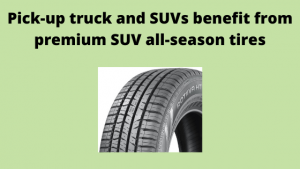It is always important to maintain your vehicle to ensure that it will remain safe to drive with. You will need to take the car for regular oil changes, check all the fluids, like braking and transmission, then check the brakes, the shock absorbers and other key parts. The car tires are also important, and they will need to be checked, rotated, balanced and aligned. You should do this after 3000 miles and then every 6250 miles to ensure that the tires remain safe and that the tire life is extended. Shock absorbers have a key role in both the driving comfort, but they will also press the tires towards the road surface and will ensure good tire contact. Bad shocks will increase the braking distance.
A safe car will ensure that you will stay on the road and that can avoid accidents. Brakes and tires will ensure that you have a minimal braking distance, and the tires will need to be adopted according to the conditions that you aim to drive in. You need to adjust them to weather, road and also special circumstances that can be out of the ordinary loads or speed. You also of course have to ensure that you select the correct tire dimension that is recommended for your vehicle and that you use the tire pressure that is specified for your vehicle. Low tire pressure will lead to worse performance, higher fuel consumption and higher tire wear. The environmental impact is also negatively affected by the higher tire waste, higher CO2 emission so this is definitely something you want to avoid.
With the tire selection you will need to assess if you need more than all-season tires, which can be used in all the weather conditions that doesn’t contain cold temperatures (below 45°F) and winter conditions (snow, ice or slush). If you have some of those conditions, then you will need to complement the all-season tires with a set of winter tires that you change to before these conditions kick-in and then switch back shortly after they cease to exist when you reach springtime. You also have the option to choose some all-weather tires that can be used all-year-round if they are approved for winter use. This allows you to not have to worry about any changes to the weather, which might otherwise leave you in a situation where you can’t use your car as you have the wrong tires on.
Don’t try to drive with all-season tires when you have winter tires. You will not have the sufficient grip for a safe drive. The same goes if you have worn out tires, then you will need to change to tires that are acceptable. For the tread depth it needs to be more than 5/32 inches for safe driving as. you will need to have sufficient wet grip, braking distance and prevention of aquaplaning. For any tires that will be used during winter conditions it is even more important to ensure that the tread depth is over the minimum.
For more information regarding optimal tire selection, visit: https://www.nokiantires.com
